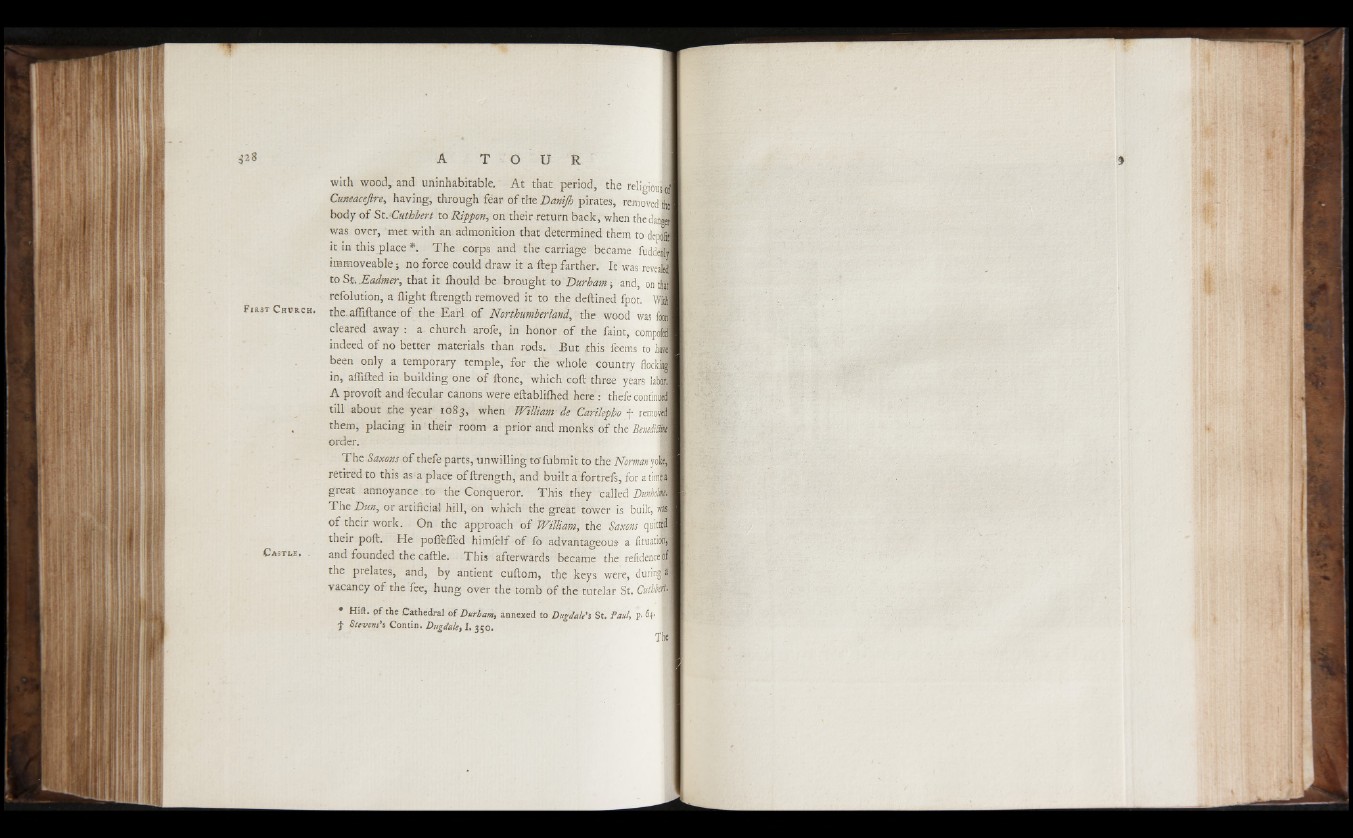
F ir s t C h u r c h .
C a s t l e .
with wood, and uninhabitable. At that period, the religion»
Cuneaceftre, having, through fe'ar of theDaniJh pirates, removed*
body of St. Cuthbert to Rippon, on their return back, when the danJ
was over, met with an admonition that determined them to dep»
it in this place *. The corps and the carriage became fuddeB
immoveable; no force could draw it a ftep farther. It was revealj
to St. .Eadmer, that it Ihould be brought to Durham -, and, on tkJ
refolution, a flight ftrength removed it to the deftined fpot. Wil
the. afliilance of the Earl of Northumberland, the wood was fool
cleared away : a- church arofe, in honor of the faint, compo®
indeed of no better materials than rods. But this feems to Inf
been only a temporary temple, for the whole country flockiil
in, a Hilled in building one of ftone, which coft three years isbjf
A provoft and fecular canons were eftablilhed here: thefe continued]
till about the year 1083, when William' de Carilepho p remoiljj
them, placing in their room a prior and monks of the BmisM
order.
The Saxons of thefe parts, unwilling to'fubmit to the Norman yota
retired to this as a place of ftrength, and built afortrefs, for a time a|
great annoyance.to the Conqueror. This they called DuahoM
The Dun, or artificial hill, on which the great tower is built, wi|
of their work. On the approach of William, the Saxons quit&S
their poft. He pofTefied himfelf of fo advantageous a fituatioxffl
and founded the caftle. This afterwards became the refidencelof,
the prelates, and, by antient cuftom, the keys were, during i
vacancy of the fee, hung over the tomb of the tutelar St. Cu/Mm
Hift. p f the Cathedral o f Durham, annexed to Dug tail's St. Paul, p. ■
t Stevens’ s Contin. Dugctalc, I. 350.
t!